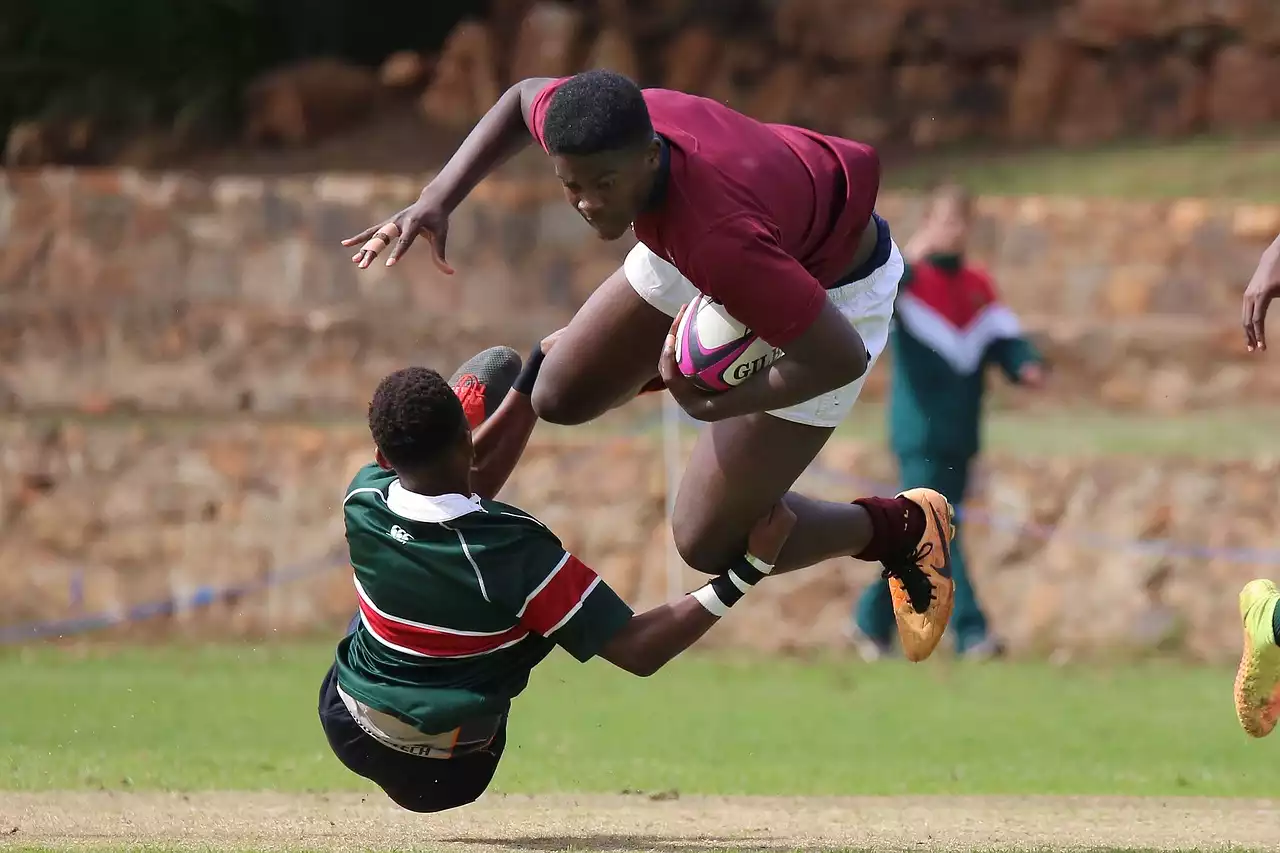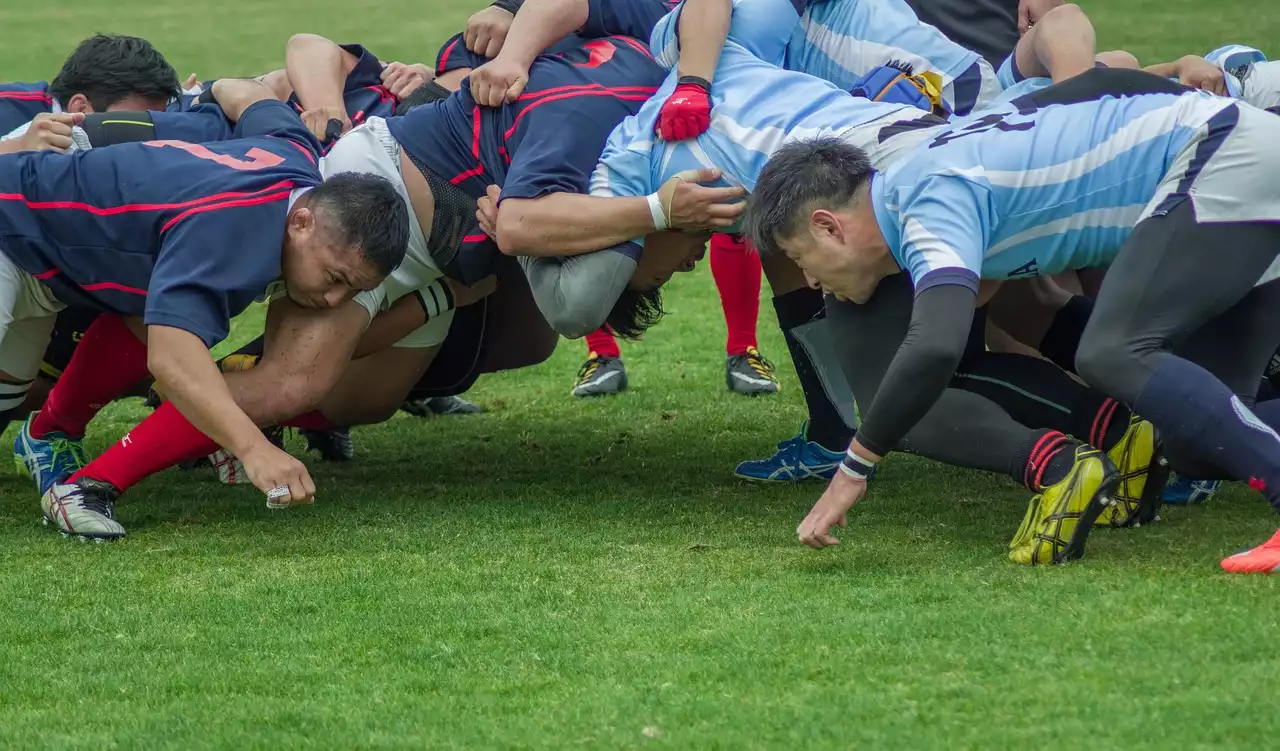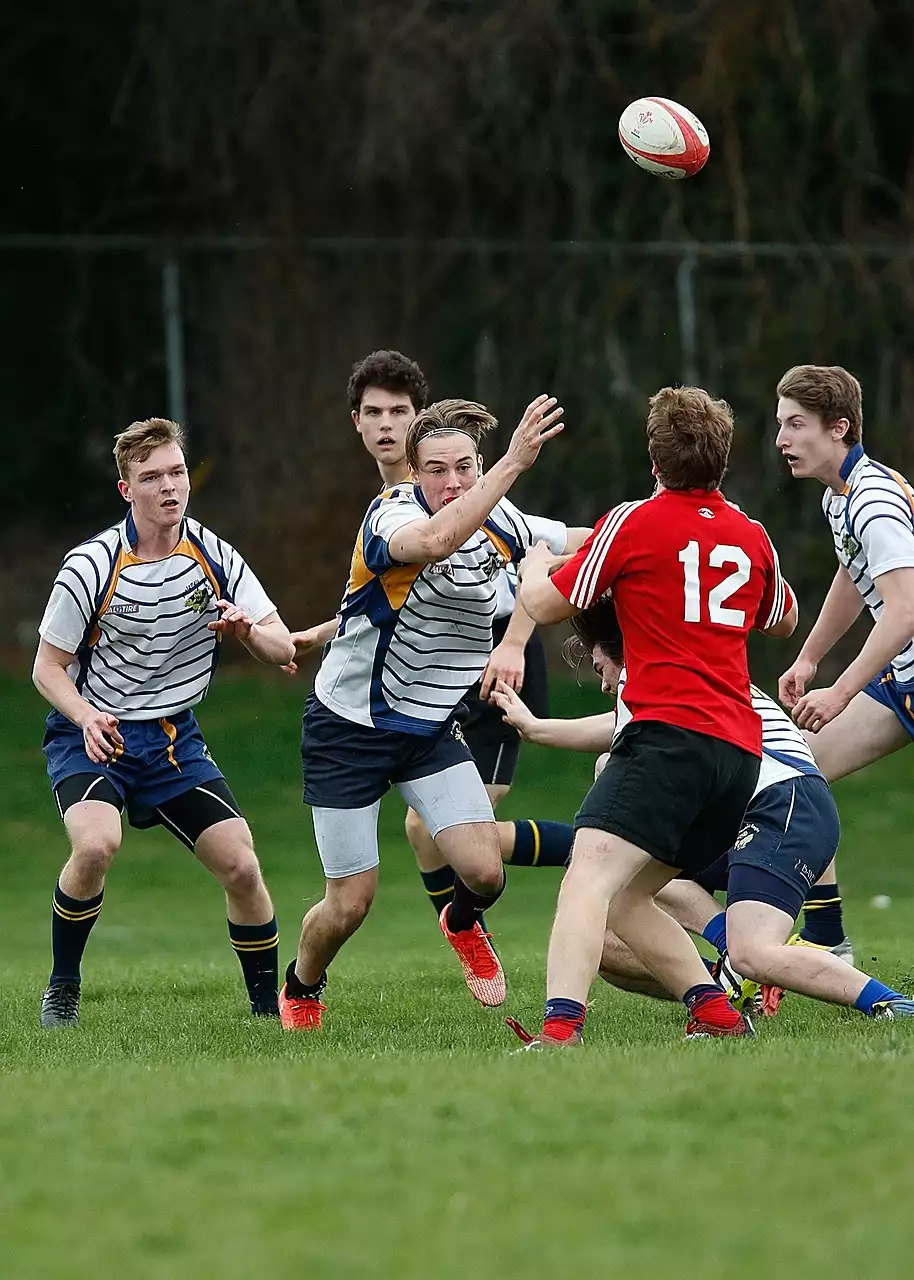Number of players in a rugby sevens match
In rugby sevens, each team is composed of seven players, with three forwards and four backs. The forwards are responsible for the scrums, rucks, and mauls, while the backs are responsible for running with the ball and providing support for the forwards. The referee is responsible for ensuring that each team has the correct number of players on the field. If a team is found to have too few players, the referee may allow the match to continue, but the team will be at a disadvantage.
The seven players on each team are divided into two halves, with each half playing one-half of the match. This allows for more rest time for each player, as well as an opportunity for the team to make substitutions between halves. Substitutions are allowed at any time during the match, but no more than seven players are allowed on the field at any given time.
Duration of a rugby sevens match
Rugby sevens matches are typically played in two seven-minute halves, with a two-minute half-time period in between. This is significantly shorter than the traditional 15-a-side game, which is usually played in two 40-minute halves. This shorter duration allows for a faster pace of play, as well as the opportunity for more substitutions.
The clock in rugby sevens is stopped whenever the ball goes out of play or when a penalty is awarded. This ensures that the game does not take too long and that the players have enough time to rest between plays. The referee also has the power to add additional time at the end of each half to make up for any stoppages that occurred during the match.
Scoring in rugby sevens
Rugby sevens aim to score more points than the other team. Points are scored when the ball is grounded in the opponent’s in-goal area or when a team successfully kicks the ball over the crossbar and between the posts of opponents’ goal posts. A try is worth five points, while a successful conversion kick is worth two points. A penalty kick is also worth three points.
Law variations in rugby sevens
Rugby sevens have some law variations compared to the traditional 15-a-side game. These law variations are designed to ensure that the game is fast-paced and exciting. One of the leading law variations is that the ball can be passed forward, as long as it is done in a controlled manner. This encourages teams to move the ball around quickly and take risks. Additionally, a team can gain a free kick from any part of the field if the ball is kicked into touch.
Tackling in rugby sevens
Tackles in rugby sevens must be made in an upright position, with arms wrapped around the ball carrier. A player must not charge, push, or hold an opponent before making a tackle. The tackle must be made below the shoulders, and players are not allowed to tackle a player who is in the air.
To ensure player safety, a player who has been tackled must immediately release the ball and play must be stopped. A penalty may be awarded if a tackled player fails to do so, a penalty may be awarded. Additionally, if a tackle is deemed to be dangerous, the referee may award a yellow or red card, depending on the severity of the tackle.
Kicking in rugby sevens
Kicking is an important part of rugby sevens and can be used to gain territory or put pressure on the opposing team. There are two types of kicks in rugby sevens: a dropkick and a place kick. A drop kick is taken from the ground and is used to put the ball back into play quickly, while a place kick is taken from a standing position and is used to kick for points.
Kicks must travel at least 10 metres for the ball to be in play. Additionally, the ball must travel at least 20 metres for the kick to be considered successful. If the ball does not travel the required distance, then the kick must be taken again.
Offside in rugby sevens
Offside rules apply in rugby sevens, just as they do in the traditional 15-a-side game. Offside means that a player is in an advanced position compared to the ball. If a player is found to be offside, then a penalty is awarded to the opposing team.
The offside line is determined by the position of the ball. If the ball is passed or kicked forward, then the offside line is the point at which the ball was passed or kicked. If the ball is passed or kicked backwards, then the offside line is the point at which the ball was received.
The breakdown in rugby sevens
The breakdown is an important part of rugby sevens and is used to maintain possession and gain territory. The breakdown occurs when the ball is on the ground and one or more players from each team attempt to gain possession. The breakdown is also known as the ruck or maul.
At the breakdown, players must remain on their feet and attempt to gain possession of the ball. No player is allowed to handle the ball in the breakdown, and if a player is found to be doing so, then a penalty may be awarded. Additionally, the breakdown must be cleared within five seconds, and any longer may result in a penalty.











